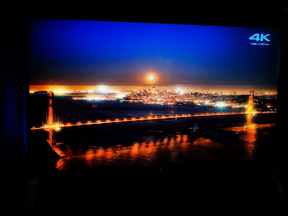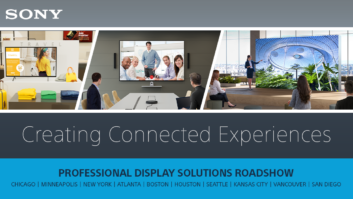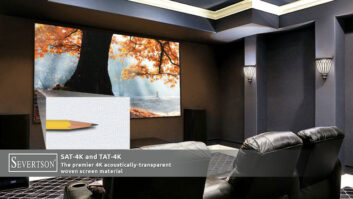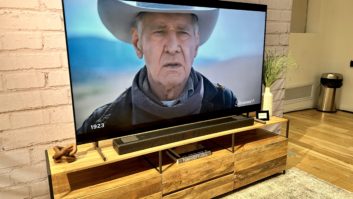
There are two interesting tussles going on in the TV industry in recent years. One pits the remaining Japanese legacy brands, such as Sony, versus Korean giants LG and Samsung. The other, within the market for high-end flat-panel displays, has the OLED camp—led by LG—competing against high-end, quantum dot/nano-crystal, LED-illuminated models. Yesterday’s announcements from Sony—once the undisputed leader in what we once called “the color TV market”—assured that its brand has dramatically returned to the thick of this competition.
In a press conference at the Rita Hayworth room at the Sony Pictures lot in Culver City, CA, Sony took the wraps off of its Z Series models with the long-awaited Backlight Master Drive technology. As foretold with prototype displays at CES back in January, the new models not only reestablish Sony’s high-end display “cred,” but they do that by bridging the divide between OLED and LCD technology in a way that offers what may well be the best of both worlds.
From a technical standpoint, the core of the Backlight Master Drive system is a highly dense, backlit, LED structure that uses LEDs with calibrated beams to deliver a mix of “OLED blacks” and “LCD/LED brightness.” The resulting dynamic range is palpable.
All other backlit LED lighting arrays control “on/off” within zones of pixel groups. With this new technology, however, the X1 Extreme processor that drives the set does away with the concept of zones and allows individual control of every single pixel. Further, the optical design of the LEDs is tightly focused so that along with dynamic range, there is virtually no flare and better color purity. If nothing else, the Z-Series means that you no longer have to give up color purity and brightness for black level; now you can have both.
Introducing the new line, Sony’s Mike Fasulo emphasized that “HDR is the next wave,” and that these sets underscore the notion that “4K/UHD” is about much more than increased resolution. Without quoting the precise figure for nits, the sets were claimed to be the brightest on the market. Beyond that, thanks to the powerful “X1 Extreme” processor, viewers also benefit from greatly improved 2K-to-4K and SDR-to-HDR upscaling, a smoother picture that takes advantage of 14-bit processing (albeit on what is apparently a 10-bit panel) for elimination of banding, and a broader color gamut.
Taking a step back from the admittedly impressive demos, there are a few other comments from the sessions that should be of interest. Most importantly, these sets are HDR-10 only, with no provision for Dolby Vision. Questions about future upgradeability went unanswered.
Given the sheer size of the 100-inch (99.5 inches diagonal) XBR100Z9D, unless someone crafts a special, custom-built assembly, that mammoth unit is for floor-stand only
Yesterday’s demos were tightly controlled, and there were a number of questions that the various Sony spokespeople sidestepped and did not answer. For example, other than a slip on the part of a non-Sony presenter that the brightness is 2,000 nits, there was no brightness spec for the record, nor was there a contrast ratio spec. There was also no information as to whether the units used VA (vertical alignment) or IPS (in-plane switching) panels or whether any quantum dot or nano-crystal technology is used.
Despite questions, Sony executives would not reveal any further information on when they might have an Ultra HD Blu-ray player. “Before the end of our 2016 fiscal year,” (which ends March 2017) was all they would say. Due to that, the emphasis on 4K/UHD content will be through streaming sources such as Sony’s own “Ultra” service, as well as Netflix, Hulu, Amazon, and others. Sony also will continue to release Ultra HD Blu-ray titles through its studio’s home entertainment arm, of course.
An interesting side note for those who do calibration was that the use of Android TV allows installers to use the CalMAN MobileForge APK app, so that test patterns may be generated directly from the display without the need for an external generator or smart device.
Although assembled press at yesterday’s event will have to reserve a bit of its judgment until after proper calibration and content comparisons, the general feeling from Sony’s staged side-by-side demos was that the new Z9 models are among the best 4K sets that we have seen. It will be interesting to see how the other tier-one brands respond in this ongoing battle.













